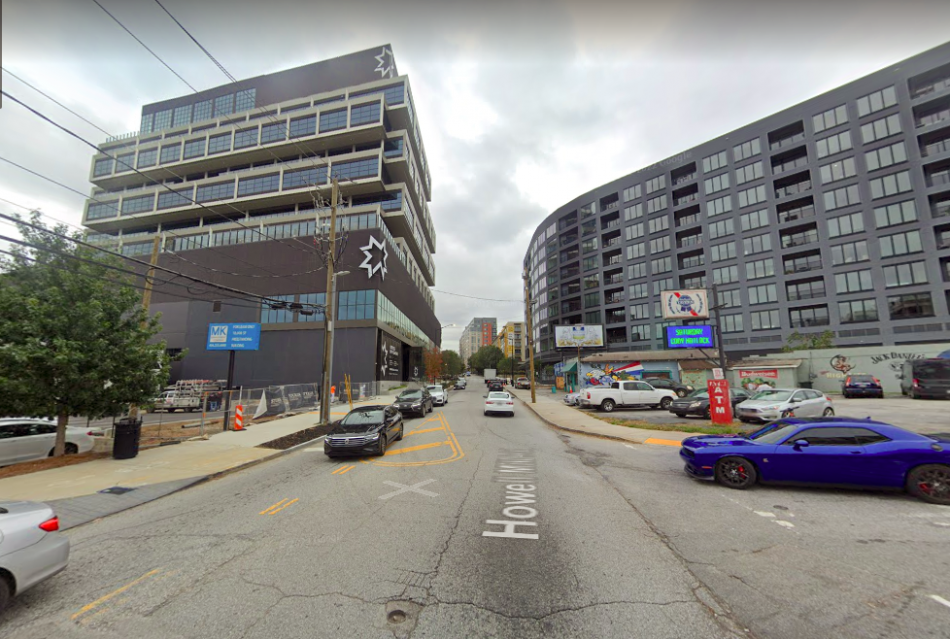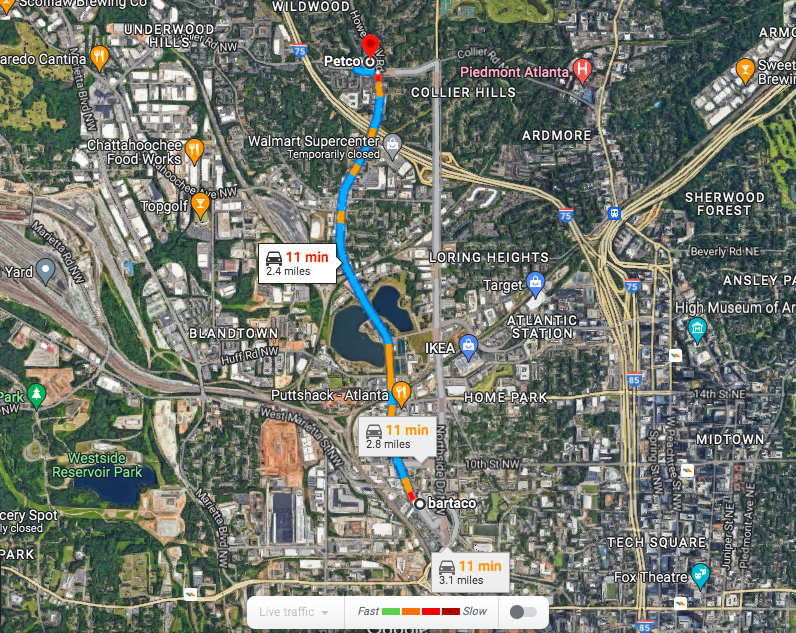In the fall of 2018, at a community meeting regarding delayed upgrades to Howell Mill Road, then-Atlanta City Councilmember Andre Dickens joined other residents of northwest Atlanta in saying they were sick and tired of gridlock in the quickly developing corridor.
“Howell Mill Road is completely congested most parts of the day and the evening,” Dickens, now Atlanta’s mayor, told Saporta Report at the time, “and it wasn’t like that before.”
More than four years later, the three-lane roadway snaking through places like Home Park and Marietta Street Artery is largely unchanged, apart from a few new crosswalks. But since 2018, roughly 1,100 apartments and townhomes have delivered in the blocks between 14th and 10th streets alone, with hundreds more in the pipeline. Star Metals Offices, a new office building, and the entire mixed-use district that is Interlock’s first phase have also come together in the same area.
The Complete Streets overhaul of Howell Mill once expected to begin in 2017—adding bike lanes, upgraded sidewalks and bus stops, fresh pavement, and new turn lanes—was axed from Renew Atlanta’s $250 million project list years ago and still hasn’t fully begun.
The good news? City documents indicate that could be changing. But exactly what a modified Howell Mill Road could look like isn’t so clear.
 Examples of development that's made the three-lane Howell Mill Road corridor a denser and livelier place in recent years, as the roadway remains largely unchanged. Google Maps
Examples of development that's made the three-lane Howell Mill Road corridor a denser and livelier place in recent years, as the roadway remains largely unchanged. Google Maps
The City of Atlanta's Department of Procurement, acting on behalf of the Atlanta Department of Transportation (ATLDOT), opened the bidding process in November for qualified contractors who could tackle a project identified as “Howell Mill Road Complete Streets.” All bids were due by early December.
The section of Howell Mill Road in question spans from West Marietta Street near Georgia Tech, up to Norfleet Street, just north of Interstate 75 and the Publix-anchored Howell Mill Village. That’s a distance of about 2.4 miles.
According to bid documents, the scope of the project would include “curb and gutter, resurfacing, drainage, signals, landscaping and signing and marking.” Protective measures for bicyclists and other non-motorists aren’t mentioned.
When asked for details on exactly what Howell Mill Road's upgrade would entail, how much it could cost, how it might be paid for, and when it could start, an ATLDOT rep replied via email, “This solicitation is currently in its evaluation stage. The dates will become more concrete upon completion of evaluation.”
Howell Mill Road isn't specifically mentioned in the $750 million list of Moving Atlanta Forward infrastructure projects approved by voters last spring.
 The general scope of the Howell Mill Road section in question, with traffic conditions at 2 p.m. on a Monday. Google Maps
The general scope of the Howell Mill Road section in question, with traffic conditions at 2 p.m. on a Monday. Google Maps
ATLDOT’s website lists the project as being in design phases now, with a tentative construction start date of February this year and completion in June 2025.
If it isn’t dated and irrelevant now, that department’s description of planned Howell Mill Road changes is more specific:
The project “includes resurfacing, re-striping, new fiber communication between intersections, signals upgrades, partial corridor raised bicycle lanes, sidewalk repairs, additional mid-block crossings, three new signalized intersections, partial road diet, and ADA upgrades from Marietta Street to Collier Road.”
A project tracker compiled by Propel ATL (formerly Atlanta Bicycle Coalition) is even more specific, as pertains to bicycle infrastructure.
It shows a bike lane running for about a mile on Howell Mill Road, from Chattahoochee Avenue south to 14th Street. South of that, a system of sharrows would stretch for half a mile to Howell Mill’s terminus at West Marietta Street. The latter provides what Propel ATL classifies as “low” protection for non-drivers.
...
Follow us on social media:
• Before/after: The remarkable transformation of Atlanta's Howell Mill corridor (Urbanize Atlanta)






